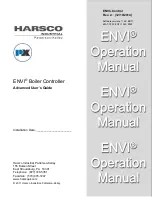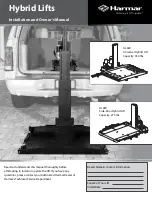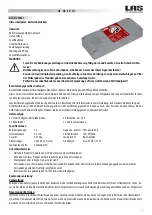
Survey P
lann
ing
Survey Planning
17
GPS under Trees
GPS receivers are not at their best in forests. Signals from the GPS constellation must
be able to reach the receiver for it to produce a position fix. If you’re behind a ridge,
building, or other solid mass, those signals won’t get through. Trees, on the other
hand, vary in their ability to obscure and disrupt the acquisition of position fixes.
Your ability to obtain a fix depends on issues such as crown closure, stand density,
elevation of satellites, and leaf type. Laser Range Finders often work very well in this
situation.
With proper planning you should be able to get fixes just about anywhere. You should
collect data when satellites are high in the sky. More satellites overhead means less
chance for signal blockage by tree trunks, the real culprits in forest-region survey
work. For best results the receiver should be in the open, but with proper planning you
should be successful wherever you go. Take a 50-meter steel tape and good compass
when you’re in difficult areas. If you can’t get a position fix in a particular spot,
measure out an offset and enter the value in the Field Asset Management software.
The offset position automatically makes corrections in the post-processing
calculations.
Frequently Asked Questions
Q: What is stored in the FS/2 and what is stored in the receiver?
A: The FAMlog program, the feature files, and the waypoint files are stored in the FS/
2. Issuing the DOS
dir
command displays all files located in the FS/2. GPS
measurement data and descriptions of features logged in the field are stored in the
receiver.
Q: How long does receiver memory last?
A: For an average of six satellites, the standard 4.5 Mb storage of the receiver records
continuous GPS measurements at a one-second interval for about 8 hours. At a five-
second recording interval, the receiver records data continuously for about 40 hours.
Logging position-only data (no post-processing) allows over 40 times the
aforementioned durations.
Q: What recording interval should I use?
A: If you want to produce detailed lines and areas, use the shortest interval, one
second. However, a one-second interval quickly fills the receiver memory. Longer
sessions can be recorded using a recording interval of two or five seconds, but lines
Содержание Reliance FS/2
Страница 2: ...ii Reliance with FS 2 Field Operations Manual FS 2 Screen Map...
Страница 6: ...vi Reliance with FS 2 Field Operations Manual...
Страница 14: ...xiv Reliance with FS 2 Field Operations Manual...
Страница 26: ...10 Reliance with FS 2 Field Operations Manual...
Страница 150: ...134 Reliance with FS 2 Field Operations Manual...
Страница 158: ...B 4 Reliance with FS 2 Field Operations Manual...
Страница 160: ...C 2 Reliance with FS 2 Field Operations Manual Figure C 1 FS 2 Handheld Controller...
Страница 170: ...C 12 Reliance with FS 2 Field Operations Manual...
Страница 176: ...E 4 Reliance with FS 2 Field Operations Manual...
Страница 182: ...F 6 Reliance with FS 2 Field Operations Manual...
















































